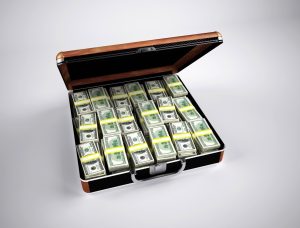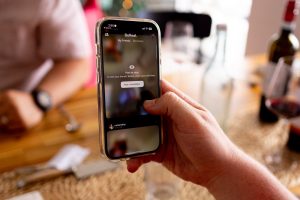An NFT is what? Explaining Non-Fungible Tokens. NFTs, or non-fungible tokens, are widely used today. These digital items, which might include everything from tacos and toilet paper to tacos and priceless 17th-century Dutch tulips, are occasionally sold for millions of dollars.
How Do NFTs Work?
An NFT is a type of digital asset that might be in the form of movies, music, in-game items, and more. They are frequently bought and sold online using cryptocurrencies, and they typically encrypt their data using the same underlying software as many cryptos.
NFTs, which have been around since 2014, are becoming more well-known as a result of being a more often used method for purchasing and selling digital artwork. In 2021 alone, the market for NFTs was estimated to be worth a stunning $41 billion, which is getting close to the whole market value of fine art worldwide.
NFTs are one of a kind, or at the very least one of a very small run, and have distinctive identification numbers. According to Arry Yu, managing director of Yellow Umbrella Ventures and chair of the Cascadia Blockchain Council for the Washington Technology Industry
Association, NFTs essentially create digital scarcity
This stands in stark contrast to the majority of digital creations, which almost always have a limitless supply. Theoretically, if an asset is in demand, lowering its supply ought to raise its value. However, many NFTs—at least in the beginning—were digital creations that were securitized versions of digital art that had already gained popularity on Instagram or renowned NBA game videos.
Famous digital artist Mike Winklemann, a.k.a. “Beeple,” assembled 5,000 daily drawings to produce “EVERYDAY: The First 5000 Days,” the most well-known NFT of 2021. It fetched a record-breaking $69.3 million at Christie’s.
Everybody can examine the individual photos as well as the entire collage of images for free online. Consequently, why would anyone want to spend millions on something they could easily download or screenshot?
Due to the fact that an NFT permits the buyer to keep ownership of the original item. Additionally, it features integrated authentication that confirms ownership. For collectors, the “digital bragging rights” are nearly more precious than the item itself.
What Distinguishes NFTs from Cryptocurrencies?
Infusible Token is referred to as NFT. There are no additional parallels, despite the fact that it commonly uses the same type of coding as virtual currencies like Bitcoin or Ethereum.
NFTs are unique. NFTs are non-fungible since they cannot be exchanged for or equal to one another due to the digital signatures on each one. For instance, just because two videos are NFTs doesn’t mean that one NBA Top Shot clip is equivalent to every day. (For that matter, one NBA Top Shot clip isn’t even always equivalent to another.)
How Does an NFT Function?
An NFT is what? Explaining Non-Fungible Tokens. Blockchain, a distributed public ledger that stores transactions, is where NFTs are found. Most likely, you are most familiar with blockchain as the mechanism underpinning cryptocurrencies. NFTs are specifically stored on the Ethereum blockchain, while they can also be used on other blockchains.
Digital things that represent both tangible and ethereal objects are “minted” into an NFT, such as:
- Graffiti GIFs
- Sports highlights videos
- Collectibles
- Skins for video games and virtual avatars
- high-end sneakers
- Music
Tweets are considered. Jack Dorsey, one of the co-founders of Twitter, sold his first tweet as an NFT for more than $2.9 million. In a sense, NFTs are digital replicas of real valuables. Therefore, instead of a physical oil painting to hang on the wall, the buyer only receives a digital file.
They also get exclusive ownership privileges. NFTs leverage blockchain technology, making it simple to transfer tokens between owners and confirm ownership. There may only be one owner of an NFT at a time. An NFT’s metadata may additionally include particular information that the creator stored.
What Functions Perform NFTs?
NFTs and blockchain technology provide a unique opportunity for content creators and artists to monetize their efforts. Artists are no longer required, for instance, to sell their works through galleries or auction houses. Instead, the artist can offer it for sale directly to the consumer as an NFT, letting them keep a bigger percentage of the sales proceeds. Artists can also incorporate royalties into their software, ensuring that they receive a portion of each sale made of their creations to new customers. Usually, artists don’t make any additional money after their initial sale, hence this functionality is desired.
If you want to make money, NFTs are not exclusively for the arts. Businesses like Taco Bell and Charmin have auctioned off themed NFT artwork to raise money for charities. Taco Bell’s NFT art quickly sold out when Charmin dubbed it “NFTP” (non-fungible toilet paper), with the highest bids coming in at 1.5 wrapped ether (WETH), or $3,723.83 at the time of writing.
A 2011 GIF of a cat with a pop-tart body called Nyan Cat sold in February for around $600,000. And as of the end of March, NBA Top Shot sales had surpassed $500 million. NFT, a single LeBron James clip, sold for more than $200,000. Snoop Dogg and Lindsay Lohan are joining the NFT bandwagon and offering original memories, artwork, and situations as part of the campaign.
How are NFTs purchased?
Due to its unpredictable highs and lows, the NFT market is thought to be high risk, and even experienced investors may decide to stay away from it. If you’re considering purchasing NFTs, it’s critical to comprehend the procedure completely. Let’s examine the procedures:
Create a cryptocurrency exchange account
Opening an account on a cryptocurrency platform or exchange is the first step. An online marketplace where you may buy and sell various cryptocurrencies is known as a crypto exchange. You must register for an account on your preferred platform in order to purchase NFTs. It is worthwhile to conduct research on several platforms to determine which best matches your needs in terms of features, costs, and continuous support.
Create a crypto wallet
Your digital assets’ access keys are stored in a crypto wallet. To access their wallet, users are given a special seed phrase, also known as a recovery phrase. You must safeguard your seed phrase since without it, you cannot access your money.
Wallets may run independently or they may be hosted on an exchange. Your wallet and private keys are still your responsibility if they function independently. If an exchange is hosting your digital wallet, the exchange serves as a middleman for cryptocurrency transfers. The business is in charge of safeguarding your assets and maintaining your secret keys.
As an alternative, you need a wallet that is directly connected to the blockchain if you wish to buy and sell NFTs without the use of a third party. The public key can then be used to transmit money directly between individuals. The two sorts of wallets that are offered are “hot” and “cold”:
Hot wallets include:
Software and online wallets are available as a desktop program, a mobile app, an extension for a browser, or both prone to cyberattacks more so than cold wallets
A cold wallet is:
Hardware wallets, which are physical devices disconnected from the internet and thought to be more secure, are more prone to loss and offer no backup in the event that you misplace your seed word.
The Ethereum blockchain, which is the network on which the majority of NFTs are sold, and Ether (ETH, Ethereum), which is the cryptocurrency native to the Ethereum blockchain, should ideally be supported by the crypto wallet you choose.
Put Ethereum in a cryptocurrency wallet
After choosing an NFT exchange and purchasing ETH, you must transfer it to a wallet. This procedure will differ based on the exchange you use to purchase Ethereum, the wallet you use, and the exchange platform where you intend to trade NFTs.
Get NFTs
You can begin purchasing NFTs after connecting to and funding your wallet. When you purchase an NFT, you acquire ownership in that it becomes your possession. The NFT holder does not, however, own additional rights to the work, such as the ability to modify or duplicate it, unless such rights are expressly granted in a written contract between the buyer and the author. The NFT you bought may be subject to different restrictions depending on the marketplace.
Read: IS CRYPTO THE FUTURE OF CURRENCY?
What exactly is an NFT market?
Although the NFT market environment is changing, most NFT marketplaces typically fit into one of these three categories:
Open market: NFTs can be bought, sold, or minted by anybody. The act of uniquely posting your token on the blockchain in order to make it tradeable is referred to as minting. Although creators can also mint their own creations, open marketplaces normally mint NFTs for you.
Closed market: To participate, artists must submit an application, and the market typically handles the minting procedures. Trading and selling have greater limitations.
A proprietary market is one where the firm running it offers NFTs that are protected by its trademarks or copyrights. To be notified of new NFT drops, some NFT traders register on and subscribe to a number of online markets. Along with more specialist investing platforms like Rarity Sniper and Rarity Tools, platforms like Discord and Twitter are being used to disseminate information about new NFTs. Investors typically move rapidly when highly anticipated NFTs are announced.
Read: Will there be no NFTs in Minecraft?
The majority of marketplaces provide step-by-step instructions to assist users in using them. As soon as you create an account there, you should connect your wallet to the marketplace. You can establish a new wallet from within a website, however, some marketplaces use their own proprietary wallets. When using a marketplace’s proprietary wallet, discounts or a reduction in the extra fees related to using other wallets may be available. An NFT is what? Explaining Non-Fungible Tokens.














2 Responses
Comments are closed.